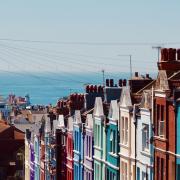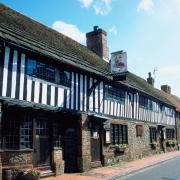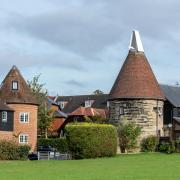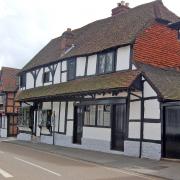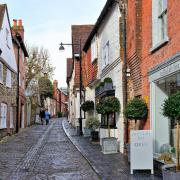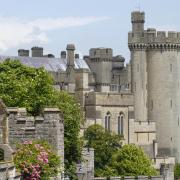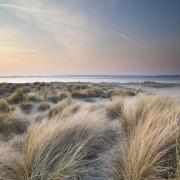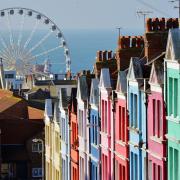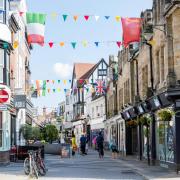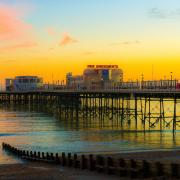Bognor Regis is perhaps most famous for King George V’s unflattering epithet. But there’s much more to the town than that, as we find out
Lacking both alliteration and rhyme, “Bugger Hothamton” doesn’t have anything like the regal ring of “Bugger Bognor,” which is surely one of the most famous kingly quotes of all time. Whether George V ever uttered those words is questionable but what is certain is that, following lung surgery, he did convalesce in the town in 1929 and subsequently bestow the suffix Regis upon it.
“To hell with Hothamton” is what he might have said had Sir Richard Hotham’s immodest attempt to eponymise the resort succeeded. That thought occurs to me as I step out of my car in Hotham Park to meet Sylvia Endacott, a long-term resident and renowned expert on Bognor Regis.
She points to the adjacent Hotham Park House, an impressive Georgian former country house built by Sir Richard in 1792 and now converted into five luxury flats. It lies at the heart of what is now a 22-acre public park.
This is where Sir Richard’s dream of creating a resort to rival Brighton began. A former hatter turned property developer who was elected to Parliament in 1780, he was a great believer in the curative benefits of sea air and set about buying up the land along the coast around what was previously a tiny hamlet. Eventually he amassed about 1,600 acres. Construction began and he built a number of elegant terraces to which he was hoping to attract the wealthy. Quite a few terraces remain and some are occupied today by the Bognor campus of the University of Chichester. And there’s a lovely old ice house around the back of the park in London Road which is in remarkably good condition and originally belonged to his house. The 28ft deep central area drops well below ground level and was used to store ice. It’s one of the best examples of its type in Sussex, which is especially appropriate since LEC Refrigeration was based in Bognor from 1946 to 2005 and, at its peak in the early 1980s, employed 1,600 people.
Sir Richard Hotham’s great hope was to persuade an influential royal to do for Bognor what the Prince of Wales, who later became Prince Regent, had done for Brighton. He failed in this respect and died somewhat disappointed that his visionary project never quite achieved the success he had hoped it would.
The health benefits of the area were elegantly summarised in this description of Hothamton/Bognor by J B Davis, which was published in 1807: “It must be obvious to every observer that there are no intervening objects to check the free passage of air to this shore, it is here met with in a state of purity, a circumstance of the highest importance to those who are obliged to depend upon the sea breezes for restoration to health, than upon immersion in the briny fluid. Nor is this convenience, great as it may be, the only one. To the advantage of having a large tract of sand, very firm and compact, exposed at low water for pedestrian exercise, or recreation on horseback, or in a carriage, an agreeable descent of the coast may justly be added; inasmuch as it affords vast facility and comfort to those who bathe, and moreover inspires the timid with confidence and courage, when they commit themselves to the arms of Neptune.”
Although doubtful, it’s nice to think that Sir Billy Butlin read this piece before deciding to erect his Recreation Shelter on the corner of Lennox Street and the Esplanade in 1932. Offering little more than one-armed bandits and dodgem cars, it was supplanted the next year by Butlin Zoo. Eventually in 1960 came the holiday camp on the 39-acre Brookland site which accommodated about 3,000 campers a week.
Ten years later a young Sylvia Endacott left her native Plymouth and moved to Bognor to join the personnel department at Butlin’s. Now known as Butlin’s Bognor Regis Resort and occupying a very prominent position, it encompasses three hotels and is evidently a major player in town. Sylvia says the locals are pretty evenly divided as to whether having a Butlin’s in town is a positive or negative.
As you would expect of a seaside town, there are plenty of attractions, not least of which is the pier. Opened in 1865, like most piers it has led a rather colourful life, has changed hands a number of times and has offered a variety of facilities from a bandstand to a theatre and a roof garden restaurant to a cinema. During World War I 200 men were billeted on it while in World War II it served as a Royal Navy observation station and was christened HMS St Barbara. Thankfully it survives and is perhaps best known today as the venue for the annual International Bognor Birdman competition when a variety of bizarre human-powered flying machines and their plucky pilots compete for prizes and prestige.
The pier also made a number of appearances in the film The Punch and Judy Man, a rather dark comedy in the early 1960s starring Tony Hancock, Sylvia Simms, Ronald Fraser, John Le Mesurier and Hugh Lloyd. Most of the movie was shot on location in Bognor Regis. When the producers invited locals to take parts as extras, more than 2,000 people turned up for an audition. As well as the pier, other parts of the town immortalised in the film include the town hall, Spencer Street, Belmont Street, York Road and the Royal Hotel, which is where the crew stayed. Tony Hancock booked into the then more expensive and smarter Royal Norfolk Hotel.
Somewhat surprisingly perhaps, Bognor was the inspiration for another classic piece of entertainment, By the Sleepy Lagoon. A famous orchestral piece that enjoyed 18 weeks in the charts in 1942 and eventually made it to number one, it is now best known as the signature tune of Desert Island Discs. Written in the 1930s by Eric Coates, it most definitely wasn’t inspired by swaying palm trees and golden beaches. Eric’s son Austin explains: “It was inspired in a very curious way and not by what you might expect. It was inspired by the view on a warm, still summer evening looking across the ‘lagoon’ from the east beach at Selsey towards Bognor Regis. It’s a pebble beach leading steeply down and the sea on that day was an incredibly deep blue, rather like the Pacific. It was that impression, looking across at Bognor, which looked pink — almost like an enchanted city with the blue of the Downs behind it — that gave him the idea for Sleepy Lagoon. He didn’t write it there. He scribbled it down, as he used to, at extreme speed and then simply took it back with him to London where he wrote and orchestrated it.”
Arguably Bognor Regis’s most famous resident never made it onto Desert Island Discs but it might be fun speculating which eight records the notorious brothel-keeper Cynthia Payne might have chosen and one dreads to think what luxury she might have taken with her. Sylvia Endacott would make an altogether more wholesome castaway and a much more effective advocate for Bognor. I’ve no idea which records she would choose but fancy her luxury might be the 5,000 postcards, mostly of Bognor, she has collected over the years.
More Sussex past…
• The history of Horsham - One of the prettiest streets in West Sussex, a Romantic poet and a surprising number of executions make an historical tour of Horsham a memorable experience for Clive Agran
• The history of Brighton - Clive Agran gets a new perspective on the much loved seaside city of Brighton




